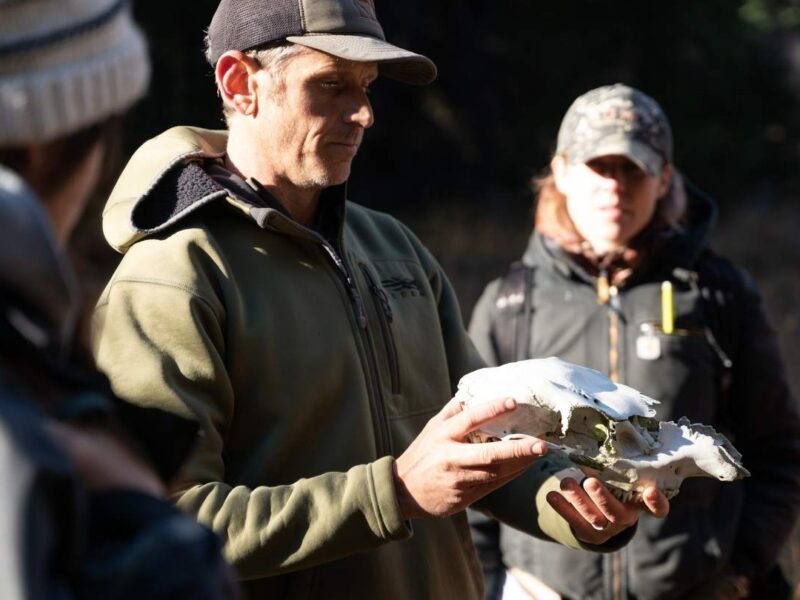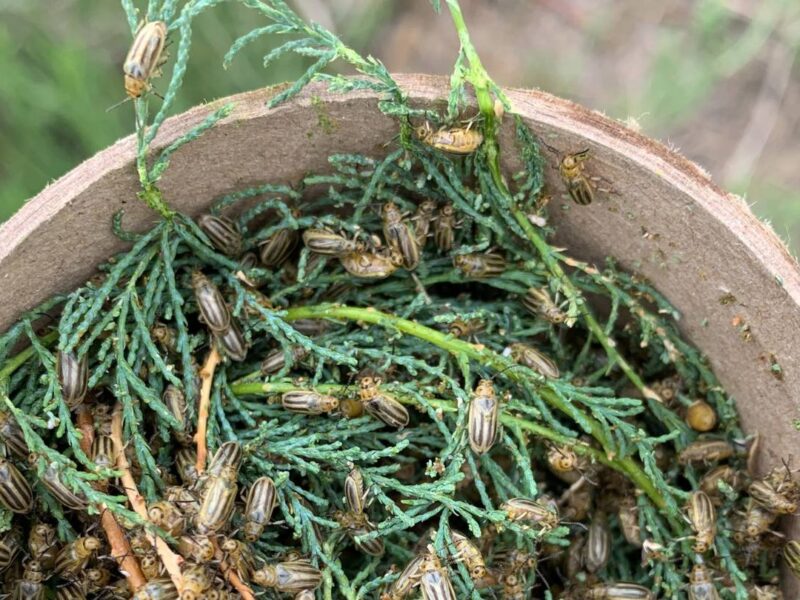Building Vibrant Rural Communities Through Place-Based Collaboration
The Montana Conflict Reduction Consortium (CRC) hosted a webinar offering opportunities to engage with producers and practitioners developing community-led solutions to natural resource challenges, while sharing novel funding opportunities for communities.
The Montana CRC, convened by Western Landowners Alliance, is a diverse, landowner-led network of partners working to reduce wildlife-livestock conflicts and support working landscapes in Montana.
This group is working to further community and place-based efforts that reduce wildlife conflicts and support the economic viability of rural communities in the State. Place-based groups lift community needs, while finding areas of agreement and shared purpose to meet a variety of resource challenges. Examples of these groups within Montana include the Madison Valley Ranchlands Group, Big Hole Watershed Committee, the Blackfoot Challenge, and the Centennial Valley Association among others.
Within this webinar, presenters and panelists shared how place-based groups form, focus conflicting ideas towards shared vision, and move ideas to implementation.
The Heart of the Initiative
For communities in Montana, collaboration isn’t just an option; it’s a necessity. Trina Jo Bradley, Chair of the Montana Conflict Reduction Consortium, initiated the session with an emphasis on the collective power of local voices: “The world is run by those that show up, and so I show up everywhere.”
Matthew Collins from the Western Landowners Alliance discussed the importance of place-based groups in addressing shared challenges like wildlife conflicts, water use, and shared the road map to place based collaboration for conflict reduction, which summarizes how place-based groups form and organize local efforts to reduce wildlife-livestock conflicts.
Success Stories from the Ground
In various communities, the power of local partnerships is evident. The Big Hole Watershed Committee started out of a necessity to address critical water use issues and environmental concerns like the potential listing of Arctic Grayling. Pedro Marques, Executive Director of the committee, enthused about their journey: “We’ve been meeting every third Wednesday, basically for 30 years. That consistency is a huge part of the social infrastructure.”
Tackling Complex Issues
Some newer groups, like the Rocky Mountain Front Ranchlands Group, are tackling complex issues, especially around predator control. “We’re still working on it, but for now we’re just really focused on predator control and conflict prevention,” said Trina Jo Bradley.
The Blackfoot Challenge, with its rich history, provides a stage for wildlife conflict mitigation. Greg Neudecker from the Fish and Wildlife Service shared insights into their collaborative efforts, stressing the importance of collective action: “Where we have great landowner groups like across Montana, that’s where we’re seeing success at scale.”
The Role of Outside Partnerships
Working with outside organizations enhances these place-based initiatives. Brad Baylis of Montana Fish, Wildlife and Parks emphasized, “I’m leaning on these place-based groups to help me identify what they think is a priority.” This sentiment underscores the close relationship between local knowledge and external support in supporting successful projects.
Steps to Forming a Place-Based Group
For those inspired to start a place-based group, key advice from the panelists includes identifying influential local figures and understanding the community’s shared challenges. Pedro Marques advised, “You’ve got to start with the folks that really have the most social influence over everyone else.”
John Anderson from the Ruby Valley Strategic Alliance noted the importance of personal relationships in overcoming divisive issues: “When we got to know each other as individuals and developed friendships, we were able to work on things we could agree about.”
A Call to Action
The webinar closed with a call for continued support and collaboration. Steve Primm from the Heart of the Rockies Initiative shared information on the Montana Community-Bear Conflict Prevention Efforts Fund fall opportunity, of which place-based groups are eligible to apply. This funding opportunity is made possible through a grant from the National Fish and Wildlife Foundation awarded to Montana Fish, Wildlife & Parks, in partnership with Heart of the Rockies Initiative. Requests for proposals will be made available in mid- to late-August, prioritizing community-led projects that work to reduce grizzly bear conflicts.
In Montana, vibrant rural communities are being supported by those willing to collaborate, demonstrate resilience, and show up. As the panelists conveyed, the journey is challenging, though necessary, to support Montana’s rich environmental and cultural heritage for generations to come. For more insights and to hear directly from these community leaders, revisit the webinar recording available through the Montana CRC’s resources.




